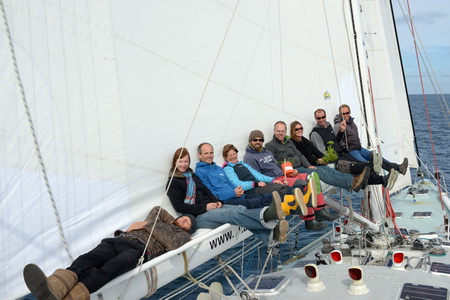We are sailing from Greenland to Iceland now, nearing the end of our three thousand mile voyage from Boston. Over those three weeks we have seen a wide variety of whales – from sperm and pilot whales to bottlenose whales, blue and sei whales and several species of dolphins. But there was one species that we just couldn’t find, despite several zigzag transects through the Cape Farewell whaling grounds off the East coast of Greenland.
It was the first species to be fully protected from hunting by international agreements as long ago as 1935, though we now know that the Soviets continued illegally hunting them long after. With around 400 animals migrating up and down the East coast of North America and little sign of any recovery, that sounds bad enough. But on this side of the Atlantic right whales are so rare that there is about a sighting every decade.
“If we were whalers, we’d be going out of business”, it was remarked. And of course that is exactly what happened with whalers from Britain and elsewhere sailing to Cape Farewell and beyond and taking so many whales that there were almost none left. We sailed past the place where two hundred years earlier a whaler recorded, “raised right whales, lowered [the boats] and struck the calf, got hold of the cow killed and sunk it…. took the calf alongside but let it go again. Did not have any prize…so ends this bad day’s work”. Now, we can’t find right whales. Not one.
I joined the boat straight from the International Whaling Commission in Panama. There, an innovative proposal from Monaco to ask the UN to step in and stop whaling on the high seas once and for all was shelved. It didn’t even have strong support from the non-whaling countries. I am left wondering what has changed.
Vassili
Vassili is an IFAW Whale biologist who has attended International Whaling Commission meetings since 1992 and has studied whales (mainly from sailing boats) in the Indian, Pacific, Atlantic and Southern oceans.

Sorry, comments are closed for this post.